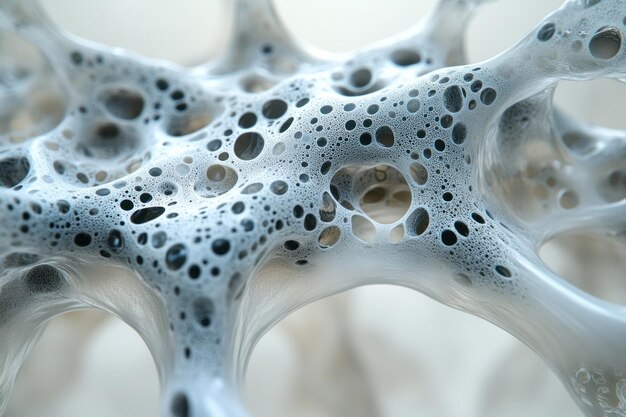Are You Predisposed to Osteoporosis? Here's What You Need to Know
Osteoporosis is a condition characterized by weakened bones, increasing the risk of unexpected fractures. It's often labeled a "silent disease" because bone loss occurs without symptoms. Many wonder whether osteoporosis is inherited or if our daily habits alone shape our bone health. Let's delve into the genetic factors and transitions into essential resources available for those dealing with this condition.
Genetics and Osteoporosis
The question of inheritance is a common concern in families where osteoporosis seems to run from generation to generation. Yes, osteoporosis can be inherited. Genetic factors are significant contributors to an individual's risk for developing osteoporosis. If your parents or grandparents had it, your chances of developing it increase, as genetics play a role in bone density and bone structure. For instance, genes influence how our bodies produce collagen, a protein crucial for maintaining robust and healthy bones.
However, it's not just about genetics. Lifestyle choices, hormonal levels, and other medical conditions also play pivotal roles. Smoking, excessive alcohol consumption, and a sedentary lifestyle can significantly increase your risk. Not getting enough calcium or vitamin D in your diet are also common compounding factors.
So, What Can You Do?
Even if genetics isn't on your side, there are ways to actively manage your bone health. Here are some pivotal steps:
- Diet: Ensure your diet is rich in calcium and vitamin D. Dairy products, leafy greens, and fish like salmon are excellent sources.
- Exercise: Engage in weight-bearing exercises like walking, jogging, or yoga to strengthen bones.
- Avoid Smoking and Limit Alcohol: Both can accelerate bone loss.
Understanding your genetic predisposition can be crucial, and if you're concerned about osteoporosis, consulting a healthcare provider for bone density tests and early intervention strategies is a wise move.
Transitioning to Helpful Resources
Coping with osteoporosis isn't just about managing physical health; it's also about addressing the financial burden that medical care can bring. Fortunately, there are numerous programs and resources designed to provide support.
➡️ Government Aid Programs: Many governments offer aid for medical expenses related to osteoporosis, making treatments more accessible.
➡️ Financial Assistance: Medicare or Medicaid may cover a portion of the treatment costs, particularly for the elderly or low-income individuals.
➡️ Debt Relief Options: Options might be available through healthcare debt consolidation, especially if you've accumulated significant costs due to treatment.
➡️ Educational Grants: Scholarships or grants may be available for those seeking to educate themselves further about osteoporosis management or even pursuing medical careers focused on bone health.
Proactively seeking out these resources can ease the financial strain that often accompanies chronic conditions like osteoporosis. By leveraging these financial tools, you can focus more on maintaining your health and less on the monetary concerns.
Resources and Assistance Programs:
- 🏥 Medicare/Medicaid: Government programs that can cover medical expenses.
- 💳 Healthcare Credit Cards: Specialty credit cards to manage medical payments.
- 📚 Educational Grants: Funding opportunities for courses related to health and wellness.
- 💼 Debt Consolidation: Financial services to manage and consolidate medical debt.
- 🏢 Non-Profit Organizations: Organizations providing financial aid and support for those with osteoporosis.
These options can empower those dealing with osteoporosis, helping to alleviate financial stress while encouraging a healthier, more balanced life. Remember, understanding your genetic predisposition is just the beginning. With the right resources and lifestyle choices, osteoporosis can be managed effectively.

Related Topics
- a Nurse Is Caring For a Client Who Has Osteoporosis.
- a Percutaneous Is Performed To Treat Osteoporosis Related Compression Fractures
- Can Alcohol Cause Osteoporosis
- Can I Do Pilates If I Have Osteoporosis
- Can I Reverse Osteoporosis
- Can Men Get Osteoporosis
- Can Osteoporosis Affect Teeth
- Can Osteoporosis Be Cured
- Can Osteoporosis Be Painful
- Can Osteoporosis Be Reversed